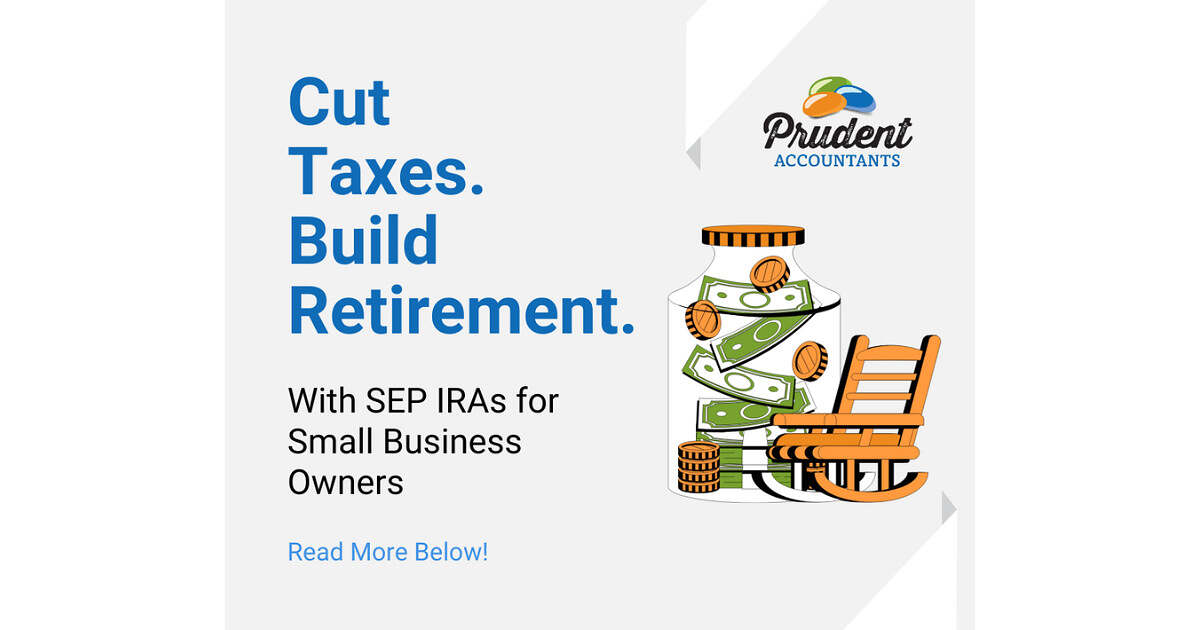One Simple Mid-Year Move to Lower Your Taxes and Strengthen Your Financial Future

In the months after tax season, many small business owners feel the same thing: relief, followed by frustration.
You may be wondering:
- “Why was I caught off guard again?”
- “How can I avoid that next year?”
- “Am I doing enough for my financial future?”
These are important questions—and the good news is that June is the ideal time to answer them.
There’s one strategy in particular that can offer clarity, peace of mind, and long-term benefit: the SEP IRA—a simple retirement plan that also reduces your taxable income.
Why This Matters—Especially Now
Most business owners don’t realize how many financial decisions can (and should) happen outside of tax season.
By mid-year, you’ve seen how your business is performing and you still have time to make strategic moves—before deadlines and distractions pile up.
If you’ve ever said to yourself:
- “I wish I had a better handle on retirement.”
- “I want to reduce my taxes but don’t know how.”
- “I just want someone to explain this in plain English.”
—this is for you.
What Is a SEP IRA?
A Simplified Employee Pension (SEP) IRA is a retirement account that business owners can set up for themselves—and for their employees, if they have any. It’s designed to be:
- Easy to set up
- Flexible in how much you contribute
- Tax-deductible for the business
- A strong tool for building long-term wealth
Unlike a traditional IRA, SEP IRAs allow much larger contributions—up to 25% of your net income (capped annually).
If you’re self-employed or run a small business, a SEP IRA is one of the most efficient and least burdensome ways to plan for retirement.
Real Example: How This Works
Let’s say you’re a sole proprietor with a net income of $100,000.
With a SEP IRA, you could contribute up to $25,000 (25%) toward your retirement—and that full amount would be a business expense that lowers your taxable income.
That means:
- Less money owed in taxes
- A meaningful investment toward your future
- A smoother, more proactive approach to next year’s filing
Why Clients Like This Strategy
Many business owners—especially women and first-generation entrepreneurs—say:
“I didn’t think retirement planning was for me. It felt too late, too complicated, or something only bigger businesses could afford.”
But that’s exactly why SEP IRAs are powerful. They’re built for busy entrepreneurs who want options that are flexible, tax-efficient, and aligned with their reality.
Key Features and Requirements (Simplified)
A Note on Employees
If you have eligible employees, SEP IRA rules require you to contribute the same percentage of compensation for them as you do for yourself.
This makes it a fair and transparent benefit, and it can support retention without the overhead of complex HR plans.
What to Do Next
You don’t need to make every financial move today. But starting with one, strategic mid-year action—like exploring a SEP IRA—can help you:
- Reduce tax stress
- Invest in your future
- Support your employees (if applicable)
- Operate from a place of confidence, not reaction
| Feature | Details |
|---|---|
| Contribution Limit | Up to 25% of income, capped (e.g., $58,000 for 2021; higher in later years) |
| Who Contributes | Employer only (you, as the owner) |
| Who’s Eligible | Age 21+, earned at least $600, worked 3 of last 5 years |
| Deadline | Contributions can be made until September 15 (with tax extension) |
| Tax Impact | Contributions are tax-deductible for the business |
| Setup Requirement | Use IRS Form 5305-SEP (simple, no need to file with IRS) |
| Reporting | No annual Form 5500; Box 13 “retirement plan” checked on W-2 if applicable |
| Access to Funds | Taxed at withdrawal; early withdrawals may have a 10% penalty |
Need Help Deciding If It’s Right for You?
At Prudent Accountants, we believe financial planning should be clear, empowering, and judgment-free. If you’d like guidance on whether a SEP IRA fits your business goals—or if another strategy would be better—our team is here to help.
Final Thought
Financial confidence doesn’t come from knowing everything. It comes from having the right tools—and using them at the right time.
This mid-year is your chance to do just that.
